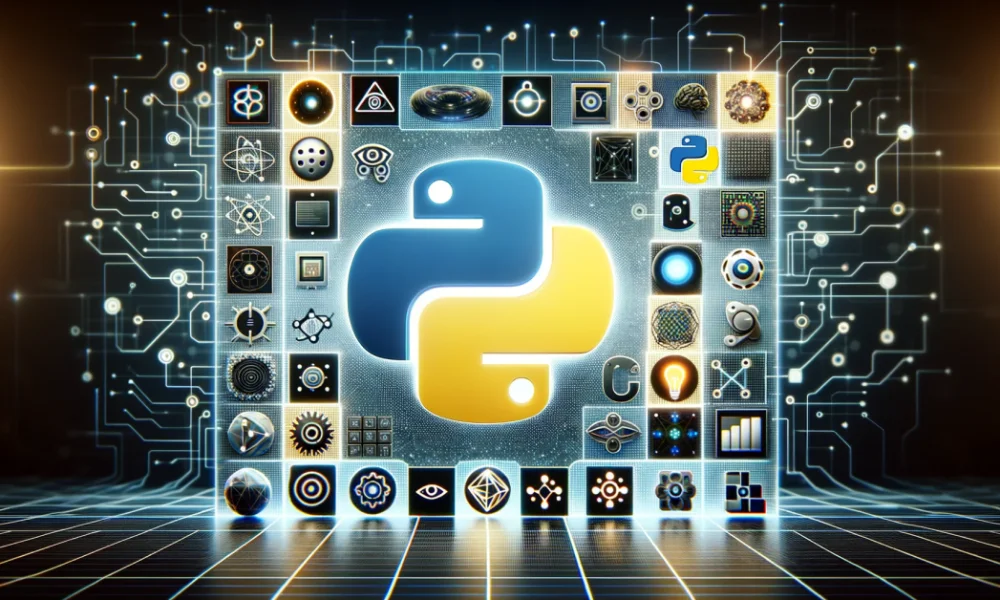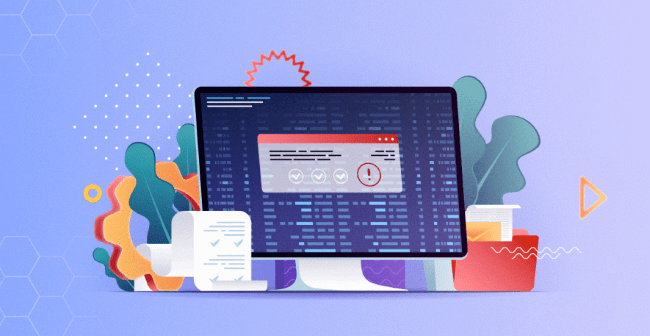Today, we live in a world of data and its associated technologies. The 21st and upcoming centuries will be called the AI/ML century. With the increase in the adoption of artificial intelligence, the number of technologies facilitating its use is rising. Choosing a programming language that improves and enhances AI implementation becomes crucial.
This blog post will dive deep into leveraging Python for AI and ML. After reading this article, we assure you that you’ll have a better understanding and clarity regarding the increasing adoption of Python for implementing AI and ML, a part of AI.
AI and ML Upsurge: Future Technologies
What do you think? Is Artificial Intelligence a necessity of modern times or just a technological enhancement? Let me tell you, this era requires Artificial Intelligence. No matter whether it’s IT, medical, education, or the health sector, there’s a massive amount of data generation per day. Is extracting the desired information from such a vast raw data source feasible? It’s a big no. Here, the AI comes in handy.
Artificial Intelligence uses different machine-learning algorithms to clean, extract, and analyze data. It draws accurate predictions in the form of graphs facilitating essential business decisions. This is the reason for a sudden escalation in the demand for analysts in the job market. Though AI gives great predictions, the human mind decides its accuracy level.
The following points highlight the applications of AI across various industries:
- AI in the Clinical field
- AI in the Education Sector
- AI in FinTech
- AI in FMCG
- AI in the Fashion Industry
As AI makes its way into varied industries, the complexity of developing the technology increases manifolds. Hence, the need of the hour is a simple language that reduces the development complexity instead of a difficult one that further increases the complexity level. One such language is Python. The article will now shed light on every aspect of Python's suitability for AI.
Python and AI/ML
Python is a rapidly rising modern programming language with numerous applications. It’s among the primary languages a beginner or fresher learns in the initial years of programming. It’s a general-purpose Fm; hence, it is used in application development, process automation, scripting, software testing, prototyping, etc. Do you know that Python is the highly recommended programming language for AI? Don’t you? It is.
Think for a moment. What makes Python the most suitable developer’s choice when artificial intelligence and machine learning come into the picture? There are many reasons, with the prominent ones discussed in the section below.
Factors favoring Python for AI and ML
Let’s get into the top eight Python characteristics that make it a widely accepted programming language for AI implementation. These factors are well-researched and will significantly help you in decision-making concerning the language selection for AI. Let’s get started:
- Simple syntax
In the beginning, we discussed that Python is the choice of the beginners. Do you know why? It’s because of its syntax. Python consists of concise and straightforward syntax. Even a non-technical person can somewhat understand it as it’s similar to English. For example, to print a line, you can simply write print(“the text to be printed”). Isn’t it so simple? It is. It takes less time to learn syntax and start development.
The code syntax allows developers to access the code details even when they are written by someone else. One can easily copy and modify the code. Debugging and code rectification take less time and do not inconvenience developers.
- Massive support of Libraries and Frameworks
Python is a language well known for its diverse collection of libraries and frameworks. With the help of libraries, developers do not need to code from scratch every time. Libraries are a set of pre-written code modules that increase the development speed. We know that AI/ML applications are complex due to continuous data processing. Developing such time-taking applications in minimum time but with error-free working is required. These libraries come in handy for such tasks.
There is a list of AI/ML libraries in Python. Some of the most significant ones are:
- NumPy: A library for numerical computations and array operations.
- SciPy: Scientific and technical computation library.
- Theano: Used to perform fast numerical computations and to train deep learning models.
- Pandas: Python data analysis and data manipulation library.
- PyBrain: An open-source ML library for neural networks.
- PyTorch: An open-source deep-learning Python framework.
- Tensorflow: A deep learning models training library using the high-level Keras API
- Portability and extensibility
Python is a portable or platform-independent language. It can run on all types of platforms, such as Windows, MAC, Unix, and Linux. Therefore, developers do not need to rewrite the code for various platforms, thus saving time and increasing productivity.
Cross-platform compatibility plays a significant role in building AI applications. AI applications require a diverse set of resources, thus requiring higher collaboration. If the base language is portable, transferring the code from one machine to another is easy, with few modifications to ensure version compatibility.
- Versatility
Python is an ever-evolving language. It constantly updates, extending its domain coverage. It can be used by beginners as well as experienced professionals according to their needs. Python supports multiple aspects of programming, such as object-oriented programming, procedural programming, and functional programming.
- Scalability
With Python, developers can adjust their application workload as per the arising requirements. One can build a small-scale AI application using Python and then increase its potential to accumulate the required modifications.
- Community Support and Documentation
Python coders have a global presence. Python has built-in community support. The development of AI applications, especially debugging, requires guidance if you get stuck at any point. You can get expert suggestions on multiple Python online community forums. One can even collaborate on AI projects through these forums.
Python enthusiasts can access a range of Python documentation online. Many professionals share much information regarding the difficulties a developer faces while building AI/ML applications. The newcomers can go through these tutorials and get a way out of their development challenges.
- Integration and Prototyping
Python easily integrates with languages like C, C++, Java and platforms like .NET, making it easier to use the existing source code in other languages in your application.
You can build Proof of Concept(POC), Wireframes, Mockups, and Functional and Data prototypes in Python. Various libraries, such as NumPy, Pandas, Seaborn, etc., smooth the prototype-building process.
- Great Visualization Choices
We’re well aware of the diverse Python libraries and frameworks. Some Python libraries, like Matpotlib, offer great visualization techniques, such as graphs, histograms, charts, reports, etc. Visuals communicate better than written texts, hence helping in critical business decision-making.
Python Vs. Other Programming Languages for AI/ML
After discussing the noteworthy factors contributing to Python's suitability for AI, let's compare Python with different programming languages. The comparison is made from the aspect of compatibility with AI application development.
| Parameters | Python | Java | C++ | JavaScript |
| Code length | Very short | Multiple times longer than Python | Multiple times longer than Python | Comparatively longer than Python |
| User friendly | Very much | Complicated syntax | Complicated syntax | Harder than Python |
| Runtime | Slower | Faster | Slower | Comparatively faster than Python |
| Community Support | Large | Small | Small | Small |
| AI Apps Built | Alexa, Tesla Autopilot | Google Search, Cortana | Optimized ML apps, robotics | Chrome ML image search |
Final Words
Python is a dynamically evolving language that is becoming accustomed to the rising needs of various industries. Though it has a good number of benefits, there are quite a few associated drawbacks in terms of performance. However, one can optimize Python's performance for building vivid AI applications using parallelization and Justin time compilation.
If you want to explore AI in depth, master the Python language. It’s vast, but get hands-on with the basic programming and essential libraries. Practice implementing the learned concepts to explore the different aspects of AI development with Python.















Leave a Reply